Cromford - The Cromford Canal
Part 01 - Leawood Pumphouse to High Peak Junction
w/e 10 May 2009
All this week's pictures were taken
with a Kodak DX6490
It was a lovely day, we had nothing planned so we
answered the call of the Derbyshire countryside with a trip up
to Cromford for a walk along the canal towpath. We had visited
the southern end of the Cromford Canal at Langley Mill last year and on this walk will
eventually see the northern extremity. Much of the intervening
route has been lost over the years although the Friends of the Cromford Canal have been campaigning
long and hard to have the whole route restored.

Cromford is steeped in industrial history and we shall touch
on a little of it during this walk. With the sun beating down
on us it felt quite warm in the sheltered valley despite a cool
wind. We started at Cromford Wharf, headed in a south-easterly
direction towards Lea Bridge as far as the aqueduct that carries
the canal over the River Derwent, a distance of about a mile
and a half. Crossing the canal via this footbridge we began our
return journey along the western (left) side of the canal.
|
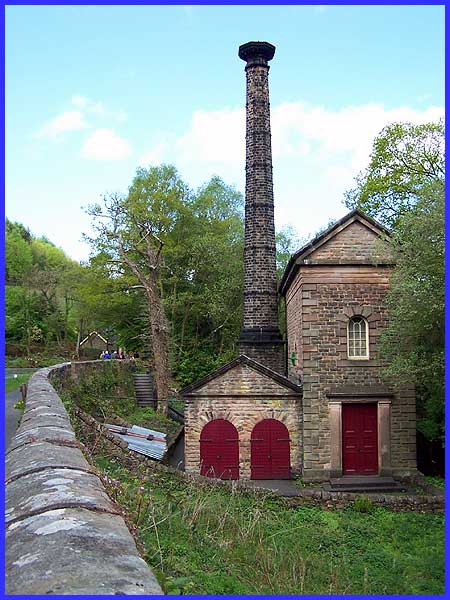
Most of the images therefore with the sun now behind us were
captured on the return journey but this is one taken on the outward
leg as we passed Leawood Pumphouse (also visible in the first
image on this page). Inside there is a steam-powered beam engine
made in 1849 at the Milton Ironworks at Elsecar, South Yorkshire.
The engine which can be seen working on various "Steam Days"
throughout the year raises water from the River Derwent up to
the canal.
|
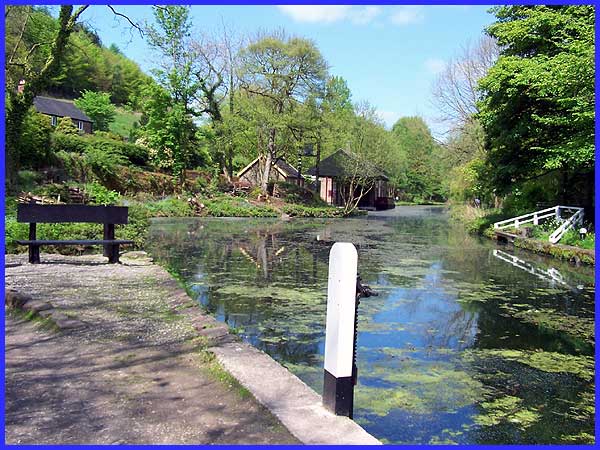
From opposite the pumphouse another building right on the edge
of the water can be seen. This is the Wharf Shed. It was at the
Wharf Shed that goods such as coal were transferred from the
canal boats to railway wagons and vice-versa.
|
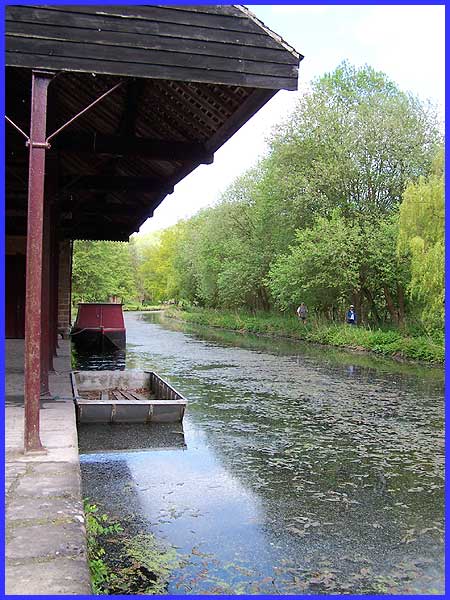
As well as coal, the goods carried also included raw cotton,
lead, iron, limestone and gritstone and it was under the overhanging
shed roof that the transfer took place between the boats and
the Cromford and High Peak Railway wagons.
|
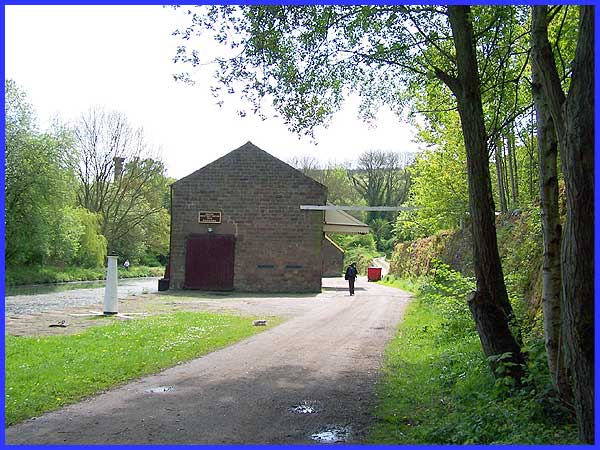
The path we walked along was the route of the old railway lines
and just beyond the shed is an information board that contains
a photograph from an earlier time. Standing in approximately
the same place, I captured the above image and if you roll your
mouse over it you will be able to compare the view today with
the earlier photo.
|
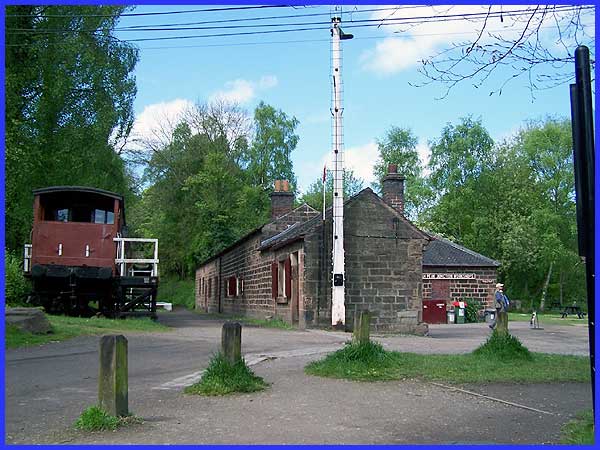
The railway lines continued for a little way to this building,
the High Peak Junction Workshops where they branched off left
to rise up the steep incline to Black Rocks, Middleton Top and eventually
to the Peak Forest Canal at Whaley Bridge some 33 miles away
thus connecting a gap in the canal network. This enabled the
coalfields of Derbyshire and Nottinghamshire to be linked with
the developing industries around Manchester and provided a vital
integrated transport system.
|

The Cromford Canal was built in the early 1790s followed by the
railway which was fully operational by 1831, the workshops dating
from about 1826. Today the former railway lines have been converted
into trails for walkers, cyclists and horse riders and are managed
by the Peak District National Park Authority. Meanwhile the workshops
have been restored to how they would have looked in the 1880s
and together with a picnic area, toilets and a gift shop, many
people make this a starting point for further exploration of
the area.
|

It's not all about industry on the Cromford Canal though - there's
plenty of wildlife to be seen too such as these Moorhens and
you advised to keep a lookout for water voles. We were impressed
by the cleanliness of the water in the canal and it is often
possible to see pike swimming along this stretch. We had crossed
the canal again at High Peak Junction and were now on the eastern
bank and still had nearly a mile to go to the end of the canal
at Cromford Wharf.
Forward to Part 02
|

